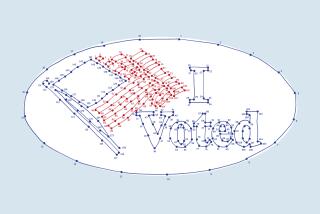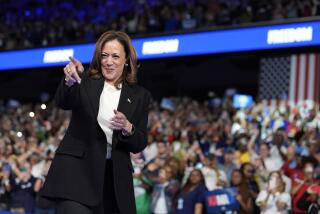Primary objective
CALIFORNIA WILL be scorned no more. That is the sentiment driving state legislators to move up the state’s next presidential primary, in 2008, to early February. Even though it held its 2004 primary in March instead of June, the nation’s largest state was not a factor in the parties’ nomination battles because they were all but over by the time Californians went to the polls.
The state was going to return to a June primary. But the Legislature is considering having only a local primary in June and catapulting to near the front of the line with a presidential primary that would immediately follow the first contests in Iowa, Nevada, New Hampshire and South Carolina.
Sacramento is right to want to make the state a player in presidential races. At the same time, the front-loading of each party’s nomination process is not a healthy development. As this month has shown, the compressed nomination schedule drives candidates to launch their presidential bids nearly two years in advance of the election. And by the time the voting begins, the fundraising primary -- in which California’s deep pockets do figure prominently -- will have already helped determine the shape of the race.
It wasn’t supposed to be this way. The primary season was intended to make party nominations more accessible to worthy but lesser-known candidates, forcing the parties to sponsor a cross-country debate on the issues. In theory, a modestly financed candidate could gain traction in the retail politics of New Hampshire and Iowa, then take his or her campaign to bigger states. The theory also holds that the grueling primary season helps vet, and develop, candidates.
In reality, the primary season has been getting shorter. In 2004, Iowa and New Hampshire almost served as national primaries for the Democrats, with the party keen to crown a victor early and protect him from extended intramural bashing. The days when candidates could slowly gather momentum during the primary season are long gone, and it is a shame that the parties have refused to take steps to bring them back.
The best solution here would be a series of regional, rotating primaries (so that your state might go first if it went last the previous election). Such a tournament would force candidates to campaign nationwide and would draw out the nomination battles until May or June.
Alas, the parties have not taken meaningful steps to curtail the front-loading of the nomination process. The Democrats recently failed to adopt a plan to stretch out the primary season, opting instead to simply let Nevada and South Carolina join Iowa and New Hampshire at the front of the line. The message to the rest of the country: It’s a free-for-all, so suit yourselves.
So it’s understandable for California to want to hold its primary on the first permissible date under party rules: Feb. 5, 2008. This would force candidates to come to the nation’s most-populous state not merely to raise money for their battles elsewhere (centered on other regions’ concerns) but to focus on issues important to Californians. And if a California vote in February, with its high costs, makes the primary process seem untenably front-loaded to the point that it forces party leaders to establish a more rational calendar, then the state will have provided the entire nation a worthy service.
More to Read
Get the L.A. Times Politics newsletter
Deeply reported insights into legislation, politics and policy from Sacramento, Washington and beyond. In your inbox three times per week.
You may occasionally receive promotional content from the Los Angeles Times.










